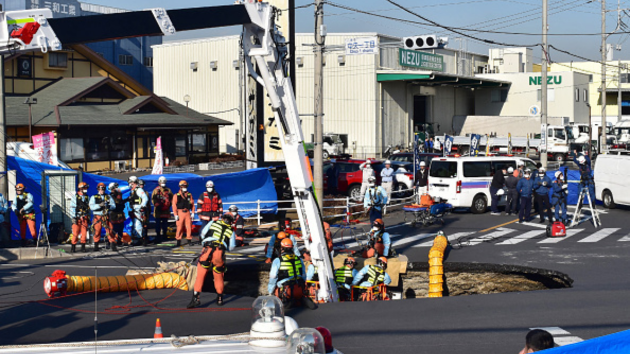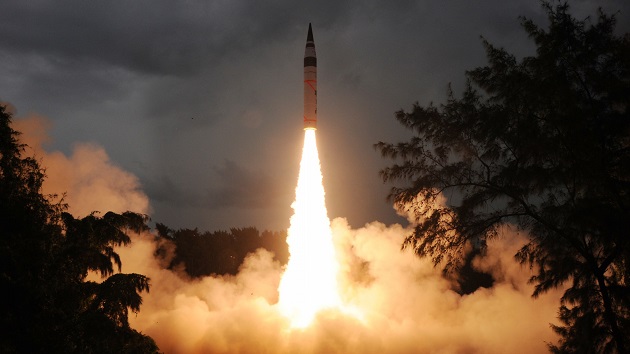US estimates Ukraine military shortages could grow catastrophic by late March
Written by ABC Audio All Rights Reserved on February 22, 2024

(NEW YORK) — By spring, Ukraine faces a potentially catastrophic shortage of ammunition and air defenses that could effectively turn the tide of the war and lend Russian President Vladimir Putin a significant advantage, according to an internal U.S. estimate.
Speaking on condition of anonymity, two U.S. officials described “late March” as being a particularly crucial time for the fate of Ukrainian troops if Congress doesn’t pass a new aid bill. A third official said it would be difficult to pinpoint exactly when the situation for Ukrainian troops could worsen but noted that the shortages were expected to grow more dire through spring.
“The juncture starts now and it just keeps getting worse progressively through the spring and into summer. So, this time period that we are entering is a critical time period,” said a senior U.S. defense official.
The U.S. assessment comes nearly two years after Russia’s full-scale invasion of Ukraine and as support for Ukraine in Congress and in the American public is fading. The once-steady flow of cash and weapons from the U.S. — totaling some $44 billion since the invasion — has mostly dried up. A separate $60 billion aid package requested by President Joe Biden and passed by the Senate is in limbo in the House as some Republicans loyal to Donald Trump question America’s commitment to another far-away conflict entering its third year.
The White House this week directly blamed the hold up for Russia’s victory in the eastern city of Avdiivka. The town fell last weekend after Ukrainian troops there were forced to ration ammunition, handing the Kremlin its first major military victory since last May.
“It was because of congressional inaction,” said White House National Security Communications Advisor John Kirby on Ukraine’s loss. “And we’ve been warning Congress that if they didn’t act, Ukraine would suffer losses on the battlefield and here you go. That’s what happened this weekend.”
U.S. officials predict similar scenarios will play out elsewhere in Ukraine as the government there is forced to make tough choices on where to put its remaining air defenses — and as Russia makes greater use of its airpower, including lobbing satellite-guided glide-bombs much as it was in Avdiivka.
“The things that are protected today — they will not be able to protect all of these locations in the future if they don’t maintain supplies of interceptors,” the senior defense official said. And if Russia gains control of the skies, “it completely changes the nature of this fight.”
Added one Ukrainian official: “Our primary goal is to deter Russian aviation. If we can’t do that, it’s time to pack our things.”
The $44 billion in U.S. security assistance for Ukraine has supplied Kyiv with a long list of sophisticated weaponry including Stinger anti-aircraft missiles, Bradley and Stryker fighting vehicles, a Patriot air defense battery, advanced rocket launchers known as “HIMARS,” and 31 M1 Abrams tanks. The U.S. also is helping to train the first batch of Ukrainian pilots to fly F-16 fighter jets donated by Denmark and the Netherlands.
But officials say Ukraine urgently needs both small and large munitions, including the GPS-guided rockets that make the HIMARS launchers effective.
Another concern is Ukraine’s air defense capability, including supplies to protect the donated F-16 jets slated for deployment later this year. Officials say the country also still needs money to build the infrastructure to support the fighters — including runways and hangers to store the jets. And while the U.S. is helping to train some pilots — described by one U.S. official as “fewer than 10” — there wouldn’t be enough money to bring on more in the future without additional U.S. aid.
Behind much of the GOP hesitation to support Ukraine is Trump, who has said it would be “stupid” to provide foreign aid to countries instead of loans. He also has encouraged Russia to attack NATO allies if they don’t contribute enough to their defense spending — a provocation quickly decried by U.S. allies in Europe as dangerous.
Complicating matters in the U.S. is that the Pentagon itself is set to run out of money on March 8 if Congress is unable to agree on annual spending legislation. House Republicans have insisted upon unspecified border policy provisions and deep cuts in domestic spending opposed by the Senate and White House.
Meanwhile, the Biden administration is trying to make the case to lawmakers that Ukraine isn’t a lost cause.
The U.S. estimates Russian has spent up to $211 billion on military operations in the war and losing $10 billion in arms sales. That’s in addition to the heavy casualties: Of the 360,000 Russian fighters available before the war began, some 315,000 Russian fighters have been killed or wounded.
A separate Dec. 8 estimate by the Defense Intelligence Agency, provided to Congress and described by a person familiar with the findings, concluded that Russia has lost some 2,200 tanks out of the 3,500 it had in stock before the war began.
Analysts say those losses haven’t crippled Russian forces though because Moscow has been able to pull Soviet-era vehicles out of storage while also manufacturing new ones. At the same time, Russia’s economic alliance with China has been able to help the country to shrug off many international sanctions, keeping its economy and military industrial base afloat.
In one recent analysis, the International Institute for Strategic Studies didn’t see any sign Russia was buckling under the weight of such hefty losses on the battlefield.
“Russia will be able to sustain its assault on Ukraine at current attrition rates for another 2–3 years, and maybe even longer,” the institute wrote.
Copyright © 2024, ABC Audio. All rights reserved.






